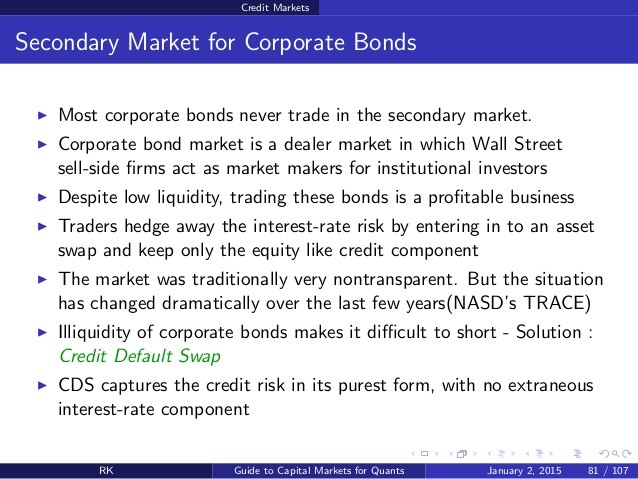5 Reasons a Limit Order Book is Good for Electronic Bond Trading Wall Street & Technology
Post on: 31 Март, 2015 No Comment

As the US fixed income markets adapt to the exchange-like limit order book (LOB) way of electronic trading, there are a number of ways institutional investors can improve their current RFQ-dominant trade work flow.
Similar to financial exchanges, traders put in limit orders (price, sizes and side) into one book (trading venue). The result is a Limit Order Book (LOB). Institutional investors can see live and executable prices levels in the LOB stacked on one another, usually with the best prices appearing on top of the stack, and participants can trade at one or more of the levels shown.
Below are five reasons why a LOB is good for the electronic fixed income market and how the buy-side can benefit.
1. Increased pre-trade transparency
Live quotes ensure traders are informed of the most precise markets before executing the trade. Having these voluntary quotes in hand reduces the need for pre-trade RFQs which can unfavorably impact execution. Traders can develop a better feel for the market by monitoring the liquidity that is coming from LOB venues. As traditional liquidity-takers (e.g. money managers) transition their trading style to include both taking and making liquidity, pre-trade levels serve as pricing guides and help the money managers determine levels (limit orders) they wish to transact at.
2. Reduce market impact of trades
Traders use an Execution Management System (EMS) to break up large orders to avoid disclosing to the marketplace the traders position. With large lot liquidity on the decline, this method helps reduce liquidity premium paid for moving positions. An EMS also gives traders the ability to set order limits based on price, size and time — creating a more efficient work flow.
3. Working Orders Automation
Aided by an EMS, the LOB model allows a large number of orders to be worked simultaneously throughout a trading session and provides traders a high degree of control over trade execution. This workflow compares very favorably to the RFQ trading protocol where on-demand pricing is usually non-negotiable. Furthermore, RFQs often expire whereas LOBs have prices that are constantly refreshed, reducing the need to conduct repetitive quoting.
4. Better fills by trading with voluntary liquidity
Often when market makers are asked to provide pricing on bonds they are not a liquidity provider in, a liquidity premium is charged to the liquidity taker. This is very likely to happen in an RFQ model where it is very difficult for institutional investors to know precisely which dealer is actively involved in a particular security. This problem is even more exacerbated when a large list of securities is considered. In addition to higher liquidity premiums, this inefficiency also leads to information leakage.
In the LOB model, levels are posted voluntarily by participants who are usually axed or involved, resulting in natural liquidity which generally leads to better execution prices. As a result, investors can often achieve better execution by trading with an axed price even if the size is smaller than their target size. On an electronic LOB model, liquidity takers with a sophisticated EMS can automatically sweep the order book to and piece together round lot fills with numerous smaller fills. As an example, if a money manager is looking for a block of a particular bond, he/she may be able to achieve better execution if the order can be broken down into smaller pieces.
5. Timing of trades
Corporate bond market makers are responding to client lists all day long. Often a large number of money managers need to execute trades at the same time, such as the daily 3 pm close. The volume of inquiry is typically so high that dealer response rates can be low or delayed and the quoted levels conservative. This bottleneck results in lower fill rates. The LOB model with axed markets and automatic executions prevents this bottleneck and therefore again increases trading efficiency.
The LOB model in the fixed income markets can offer a number of work flow efficiencies for the institutional investor. With the right technology, bond managers can complement their current RFQ workflow by incorporating LOB liquidity and achieve even better execution for their clients.














